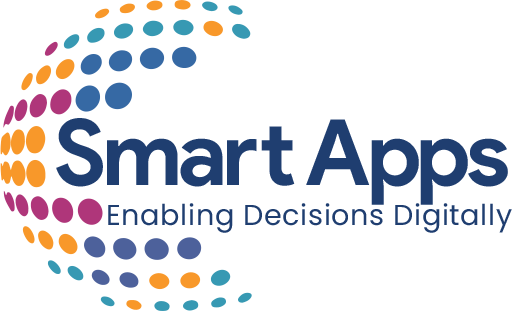Time series analysis and forecasting are powerful tools that can provide valuable insights to businesses for making informed decisions. Whether it’s predicting demand for a product, forecasting stock prices, or optimizing resource allocation, time series analysis can help businesses gain a competitive edge. In this blog, we will explore the key concepts of time series analysis and forecasting, discuss popular techniques, share practical tips, and showcase real-world applications.
Time series data refers to a collection of data points that are recorded over time and often
exhibit patterns, trends, and seasonality. Examples of time series data include stock prices,
weather data, website traffic, and sales data. Time series analysis involves analyzing these
patterns and trends to understand the underlying structure and dynamics of the data.
Common Time Series Analysis Techniques:
There are several popular techniques that can be used for time series analysis. These include:
1. Moving Average: The moving average method involves taking an average of a certain number of data points within a time window. It can be used to smooth out noise in the data and identify trends.
2. Exponential Smoothing: Exponential smoothing is a method that assigns weights to different data points, giving more importance to recent data. It is useful for forecasting data with a trend but no seasonality.
3. Autoregressive Integrated Moving Average (ARIMA): ARIMA is a widely used technique for time series analysis that takes into account both the autoregressive (AR) and moving average (MA) components of the data, as well as any differencing (I) needed to make the data stationary. It is a versatile technique that can handle various types of time series data.
Advanced Time Series Analysis Techniques:
In addition to the basic techniques, there are more advanced techniques that can be used for time series analysis. These include:
1. Long Short-Term Memory (LSTM) Networks: LSTM is a type of recurrent neural network (RNN) that can capture long-term dependencies in time series data. It is particularly effective for data with complex patterns and seasonality.
2. Facebook’s Prophet: Prophet is a time series forecasting library developed by Facebook that is designed to be user-friendly and handle missing data, outliers, and seasonal data. It is a powerful tool for forecasting time series data with multiple seasonality components
Best Practices for Time Series Forecasting:
To ensure accurate and reliable time series forecasting, it’s important to follow best practices. Here are some practical tips:
1. Data Preprocessing: Clean and preprocess the data, handling missing values, outliers, and seasonality appropriately.
2. Model Selection: Choose the appropriate time series model based on the characteristics of your data, such as trend, seasonality, and noise.
3. Model Evaluation: Evaluate the performance of your model using appropriate metrics, such as mean squared error (MSE) or root mean squared error (RMSE), and validate the results using cross-validation.
Real-World Applications of Time Series Forecasting:
Time series analysis and forecasting have numerous real-world applications. Some examples include:
1. Demand Forecasting: Forecasting demand for products or services to optimize inventory management and production planning.
2. Financial Forecasting: Predicting stock prices, exchange rates, and other financial indicators to inform investment decisions.
3. Energy Demand Forecasting: Forecasting electricity demand for efficient energy generation and distribution.
4. E-commerce Forecasting: Predicting website traffic, sales, and customer behavior to optimize marketing strategies.
Challenges and Considerations:
1. Data Quality: Time series data can be noisy, contain outliers, and have missing values. It’s crucial to clean and preprocess the data appropriately to ensure accurate forecasting results.
2. Seasonality: Many time series data exhibit seasonality, which refers to repetitive patterns that occur at fixed intervals. Seasonality can impact the accuracy of forecasts, and it’s important to account for it in the analysis.
3. Model Complexity: Some advanced time series models, such as LSTM networks, can be complex and require a deep understanding of machine learning concepts. It’s important to carefully select the appropriate model for your data and level of expertise.
4. Overfitting: Time series data can be susceptible to overfitting, where a model may perform well on historical data but fail to generalize to future data. It’s important to properly validate models and avoid overfitting by using techniques such as cross-validation.
Conclusion
Time series analysis and forecasting are powerful tools that can provide businesses with valuable insights for making informed decisions. By understanding the key concepts, utilizing appropriate techniques, following best practices, and considering the challenges, businesses can unlock the full potential of time series data. From demand forecasting to financial forecasting, time series analysis has numerous real-world applications that can drive business success.
So, whether you’re a business owner, data analyst, or a machine learning enthusiast, mastering time series analysis and forecasting can give you a competitive advantage in today’s data-driven world. With the right approach, tools, and techniques, you can uncover hidden patterns, trends, and opportunities in your time series data, and make data-driven decisions that can positively impact your business outcomes.
Remember, accurate forecasting is not a one-size-fits-all approach. It requires careful consideration of your data, model selection, evaluation, and continuous refinement. So, start exploring the fascinating world of time series analysis and forecasting, and unlock the full potential of your time-based data to drive business success!
We hope you found this guide informative and valuable. If you have any further questions or need assistance with time series analysis and forecasting, feel free to consult with our experts.
Happy forecasting!



